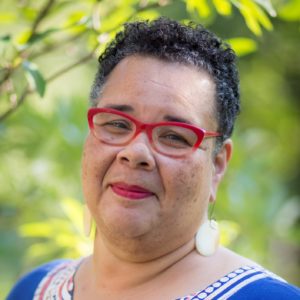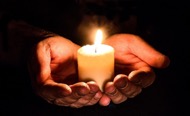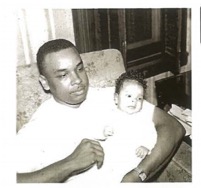
Writing a Lecture/Writing an Obituary

Recently, my burden, challenge, and task was to write my father’s obituary. Obituaries typically allow 800 to 1,200 words to depict and describe a person’s entire life. As a writer, this was a daunting task. As a daughter, it was impossible. How to proceed? After reading the obituaries of other family and friends - noting their style and form - I decided my challenge was to cover my father’s 90 years on planet Earth by giving facts and data. I wrote and then checked the accuracy of dates and spelling. The draft read like a file for a candidate for the witness protection program.
I scrapped that version and launched into version 2. I soon stopped myself. My flowery prose and long sentences sounded like a rejected Hallmark card.
Finally, I sat and considered my father and those mourning him. In this time of homegoing and celebration of life, what did I want to assure my family and community about my father? I decided, with resolute conviction, that I would write Lloyd R. Westfield was a noble man – because he was. The final obituary emphasized his courage, strength, and fortitude of care and concern – all traits of nobility. I told people about his life-long journey as a musician, special education teacher, school psychologist, and churchman. Mostly, I wrote about his passion for his family and for our African American community, and the many ways this love was steadfast.
I wrote a good obituary – one that described my daddy as a man who was earnest, dignified, generous, and loving. I knew I was writing a narrative that rarely appears in racist America about Black fathers, yet it is a story that was my every-day, family experience. I wrote his obituary as a gesture of resistance against the distorted portrayals which slot all Black men into a few, flimsy, stereotypic categories assigned to them. Writing Daddy Lloyd’s obituary was an act of compassion for the un-named African American men whose stories of unwavering commitment to their families is un-appreciated, overlooked, or ignored.

Writing dad’s obituary has made me consider how I write lectures. I do not often lecture in my courses, but when I do, how do I write what I write? Do I give the data and basic concepts, and then expect students to resonate with cold facts? Do I tell them “my version/my answer” to the question at hand without considering their perspectives, contexts, and situations? Do I spend time choosing vernacular which will invite them into deeper thought and heightened resonance, or simply rely upon the stilted, obsequious vocabulary of the religious academy? Do I lecture to my students the same way I would lecture to colleagues, and then wonder why students are lacking understanding when, in fact, it is my communication skills that are sub-par?
Relying upon facts and data as lecture material is thwarted by the adage “Content is cheap.” In the digital age, students have as much or more access to data than the person who is lecturing. It is commonplace for Siri and Google to know more facts with greater accuracy than the person lecturing and for students to consult Siri and several search engines during the lecture. Learning to write lectures which resist multiple un-contextualized definitions, lists of statistics, and block quotes is a challenge worth attempting. The challenge is to design a lecture whose argument is not based upon a contrived or universalist understanding. We must lecture to demonstrate and expose our own modes of epistemological creativity and scholarly meanderings. In other words, lectures are more valuable to students if they are works of art rather than mundane spreadsheets set to words.
 Writing a good lecture takes time, as it is as much engineering and architecture as it is poetry and prose – a complex enterprise, indeed. My best lectures are those that have been given several times and have the benefit of re-consideration and rewriting after questions, answers, conversation with my students. Like my father’s obituary, any topic warranting the writing of a lecture will be much too large and expansive to be satisfied by one lecture. It behooves the writer to contemplate the needs of the students who will hear, witness, and glean from the lecture. Clarity about the viewpoint of the lecture is as important, or more important, than writing the thesis statement for the lecture. Students do not want the delusion of neutrality; they want to hear your opinion, consider your “take,” and then have the opportunity to resonate and align or disagree, question and debate. Good lectures are evocative, provocative, and able to bring complexity to the learning journey without befuddling the learners.
Writing a good lecture takes time, as it is as much engineering and architecture as it is poetry and prose – a complex enterprise, indeed. My best lectures are those that have been given several times and have the benefit of re-consideration and rewriting after questions, answers, conversation with my students. Like my father’s obituary, any topic warranting the writing of a lecture will be much too large and expansive to be satisfied by one lecture. It behooves the writer to contemplate the needs of the students who will hear, witness, and glean from the lecture. Clarity about the viewpoint of the lecture is as important, or more important, than writing the thesis statement for the lecture. Students do not want the delusion of neutrality; they want to hear your opinion, consider your “take,” and then have the opportunity to resonate and align or disagree, question and debate. Good lectures are evocative, provocative, and able to bring complexity to the learning journey without befuddling the learners.
When I consider the better/best lectures I have heard, the lecturer has exposed, claimed, and shared their own thinking rather than hiding behind a mask of non-committal to the material at hand. The lecturer made their own social location clear in the stance they took, rather than claiming some kind of generic essentialism to the work. And the lecturer worked at the craft of words, which helped me know what they were saying while they were saying it. Dense materials can be lectured, but the words to convey the density must be carefully chosen so the listeners, the students, can hear and access the materials. This is not a dumbing-down of material. This is the craft of writing in such a way that there is flow, synergy, and wide thresholds of encounter and discovery. Listeners must be able to see the pieces as well as the whole of a lecture.
 I suppose it is possible to elevate a poorly written lecture into a good lecture by the way it is performed; however, most of us cannot rely on our performance. Drawing the listener in, locating them in new worlds, challenging them to new perspectives, providing a previously unconsidered rationale – this is the “work” of a well-written lecture. We must not doubt that students are seeking disruption of, and a counter-narrative to, the hegemonic imagination that has been reveled as moral bankrupt at this moment in history. As I have learned from my beloved teacher, Katie Geneva Cannon, the best lectures seek to debunk, unmask, and disentangle so students might have the where-with-all to change the world toward justice.
I suppose it is possible to elevate a poorly written lecture into a good lecture by the way it is performed; however, most of us cannot rely on our performance. Drawing the listener in, locating them in new worlds, challenging them to new perspectives, providing a previously unconsidered rationale – this is the “work” of a well-written lecture. We must not doubt that students are seeking disruption of, and a counter-narrative to, the hegemonic imagination that has been reveled as moral bankrupt at this moment in history. As I have learned from my beloved teacher, Katie Geneva Cannon, the best lectures seek to debunk, unmask, and disentangle so students might have the where-with-all to change the world toward justice.
Writing an obituary is not easy. Writing a lecture is not easy. Each, in its own way, asks that we not ignore the tender fragility of our souls, but speak our souls into the room. Each written piece is the work of healing – us and them. The writing is simultaneously truth-telling, soul-speaking, and hegemony-challenging. I exhort you not to write lectures or obituaries if your goals are any less.
Leave a Reply